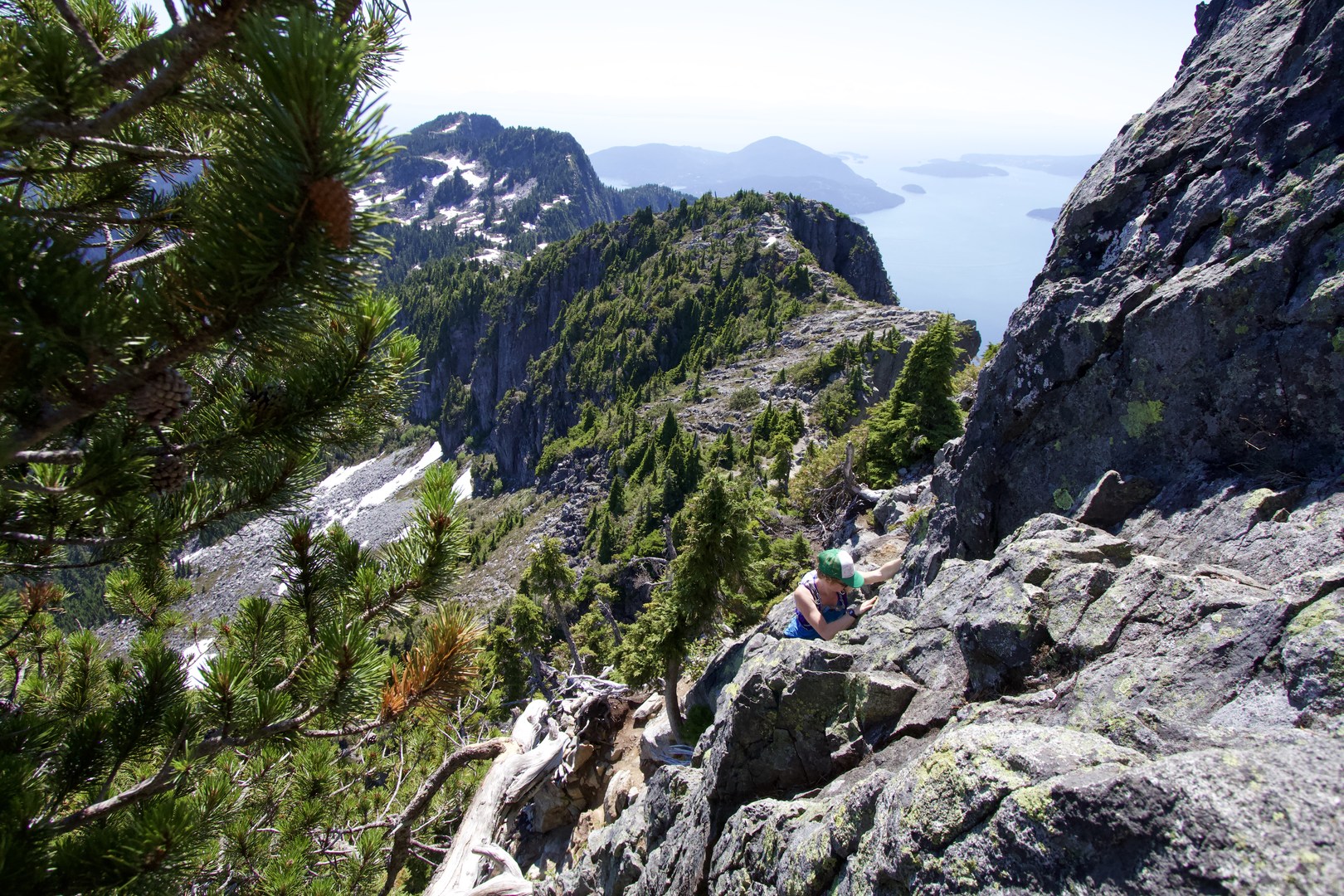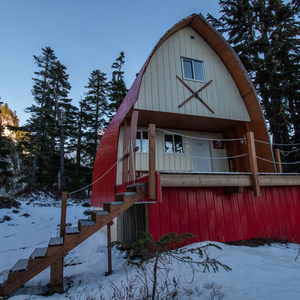You are here
The Lions, known as Twin Sisters or Ch'ich'iyúy Elxwík in Skwxwu7mesh, are two of the most prominent, and recognizable peaks in Vancouver. Visible from nearly everywhere in central Vancouver and beyond, they are an enticing presence that draws many hikers, and scramblers. It is not a technical climb, though the route finding is challenging and there is a great deal of exposure. Several people have been killed on this route as well. It is highly recommended that climbers have rock climbing and route finding experience in addtion to experience on previous scrambling outings on mountains like Golden Ears. Matt Gunn's guidebook, "Scrambles in Southwest British Columbia," is a superb resource for this climb, which Gunn rates as difficult.
To prepare for this scramble, be sure to bring the usual 10 Essentials, lots of food, and good deal of water are recommended. Once you gain the ridge you are in the sun for much of the day, and in July it is freqently very hot. The steep climbs add to that. There is no safe drinking water availble, so bring your own.
On the Lions you will see a variety of abilities, skill levels, and boldness. Most people do not use helmets, for example, but rockfall is common enough on this climb that a helmet is highly recommended. Good footwear with high quality rubber and edging soles are highly recommended. While there are a couple of ancient rusty pitons, the route's cruxs are traverses, so a rope isn't that useful, and there is limited protection. Unless you are a skilled trad climber, leave the rope at home. If you are, you likely don't require the rope. To approach, you can either use the standard route or use the more scenic Howe Sound Crest Trail.
The route begins just before the base of the Lions. You will stand at a dead vertical gap. The downclimbing is tricky (fourth class) but not exposed, and there is often a rope in place. Be warned that this rope has snapped in the past, so be cautious and don't trust it implicitly.
From here, an airy step gains the slabs. This is the easiest way to skirt onto the left hand block. Past this block is a tree that you have pull through that gains another block. Carefully walk east (toward Vancouver) and approach the edge. From here you carry on the narrow flat slab of rock, which ends with sloped slab. At the first piton, look for breaks in the slab and some jugs on the left hand wall. These are tricky moves that feel very exposed, but they aren't technically difficult. From here you start heading up more akward slab and using breaks in the rock for hand holds. Most holds are fairly small by scrambling standards, but they are great by rock climbing standards.
You'll pass another Piton, and that gains easier slab terrain that is less sloped. You will see dirt and likley footprints here. The most direct route appears to be directly up in a crack system that has a big root growing out of it. This crack is a fourth class scrambling, and it goes up next to a bushy tree. Above this the route is fifth class scrambling that is high quality but very committing, and it has very small feet moves that are challenging without approach shoes.
You can skip it for third class scrambling by not gaining elevation past the slabs and traversing on the right hand side where narrow dirt path is visible. This leads to a well treed block shelf. Climb through the trees with large well rooted branches that have been polished by the thousands of people that go by. If you don't have multiple thick branches to grab, you're on the harder route. Above this is a good resting spot that is fairly open, not exposed, and provides a chance to view the next portion of the route.
From here head straight up third class terrain, veering leftwards about 8 to 10 meters up. This is where the fifth class section rejoins the main route. Beware. Paint marks heading left often misguide people here. Do not follow them. They go through very challenging rock climbing terrain up the face. The second traverse crux begins here. You must take a couple of airy steps to the right (north) across some narrow but solid foot and handholds. It starts with a big step from a narrow block. Just past this is another good place to catch your breath. Beyond this is mostly third class scrambling that isn't too exposed. Just beneath an old tree is a tricky rust colored section that lacks much in the way of good holds. Beware the tree as it is also being eroded. There is also a undercling that is loose, and this is the worst spot for rockfall. Beyon this it's a push through some tight trees before easy second/third class scrambling to the summit.
The return is the way you came. You may find it easier as you will be more aware of where the holds are.











Comments
Sign In and share them.